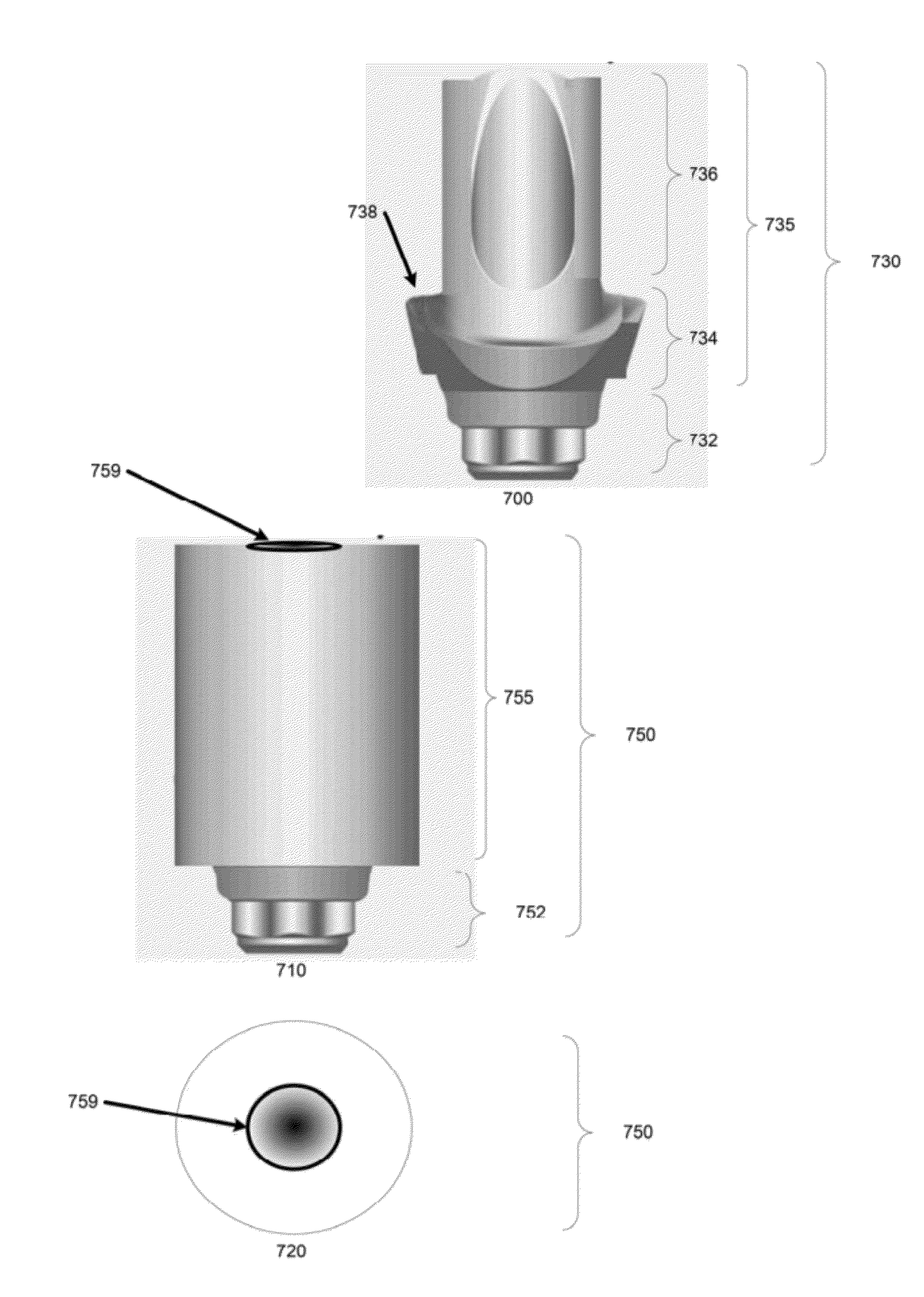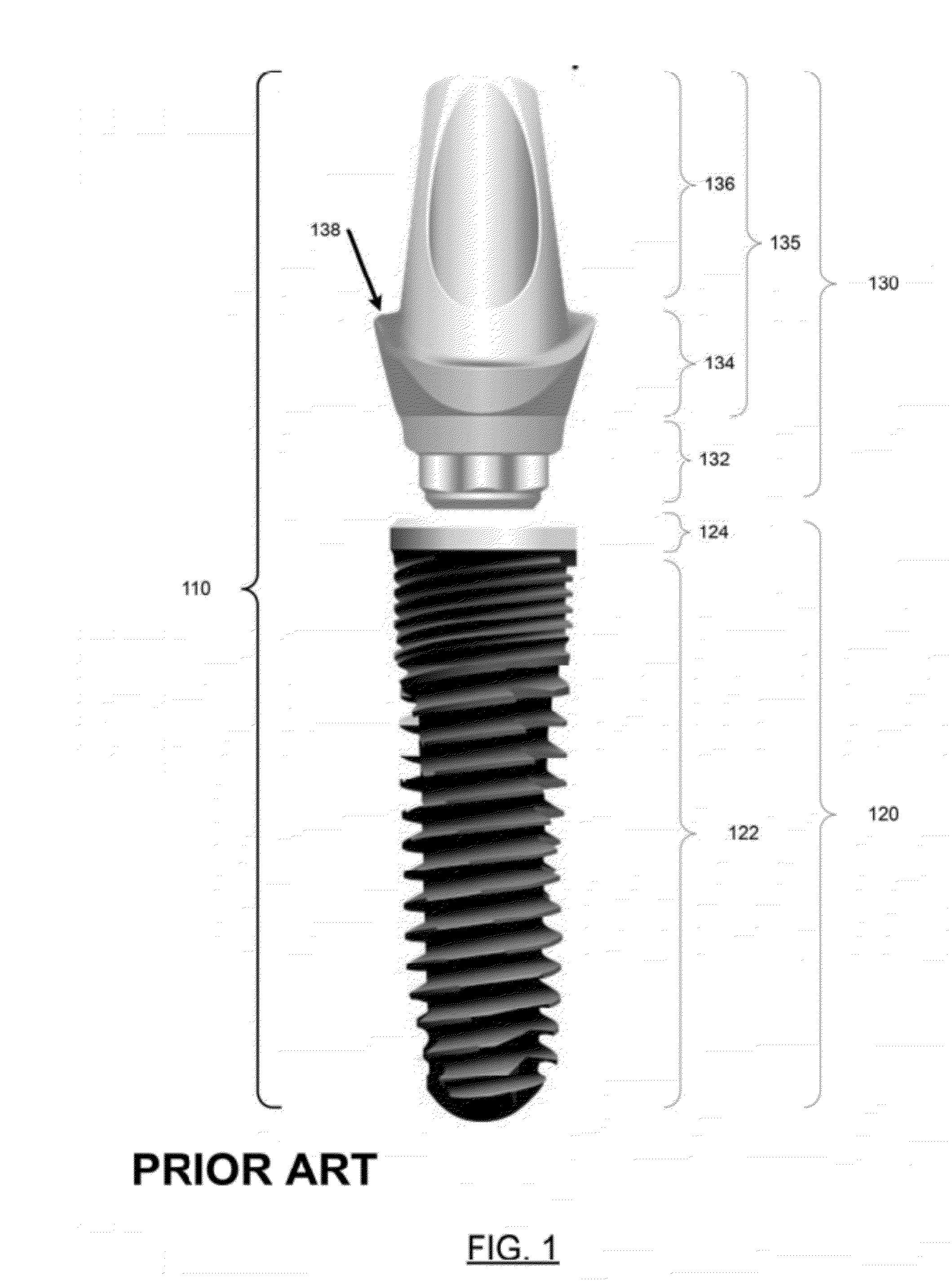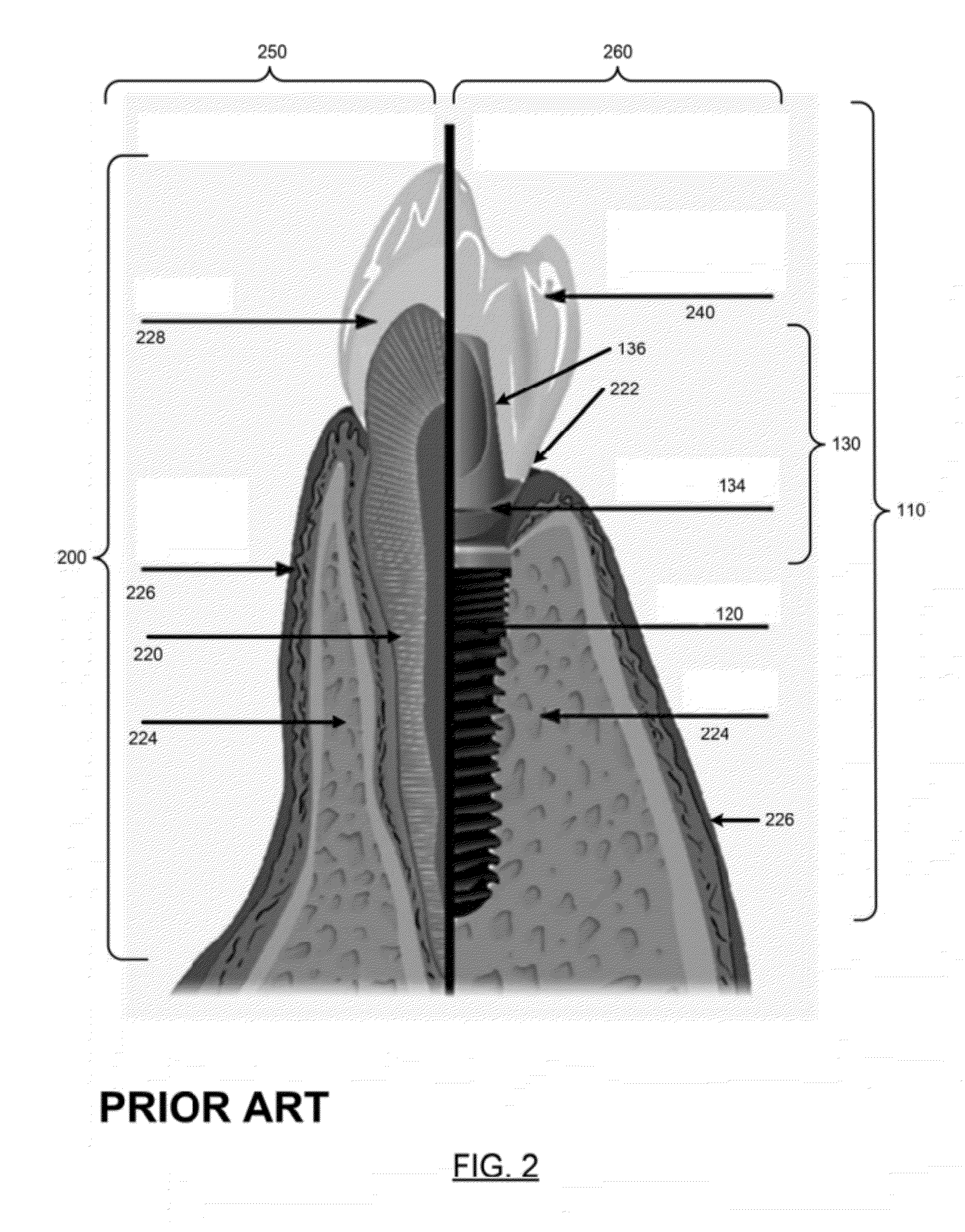Techniques for providing custom-formed implants
a technology of medical implants and custom-made materials, applied in the field of custom-made medical implants, can solve the problems of unsatisfactory cosmetic appearance, disadvantageous application of such materials, and often further disadvantages of applying materials on the surface of dental or other medical implants
- Summary
- Abstract
- Description
- Claims
- Application Information
AI Technical Summary
Benefits of technology
Problems solved by technology
Method used
Image
Examples
first embodiment
[0079]a blank dental implant abutment 730 is shown in side view 700. The base portion 732 of the blank abutment component 730 has similar dimensions to the base portion 132 of the standardized abutment of FIG. 1 and FIG. 2, and thus may be used compatibly with the standardized body component 120 of FIG. 1. In some embodiments, at least a portion of the base portion 732 has identical dimensions to base portion 132 of FIG. 1.
[0080]Other dimensions of the blank abutment component 730 are different from those of the standardized abutment component of FIG. 1, for example the chimney portion 736 may have greater diameter as shown, to facilitate the removal of material to custom-form the blank component to a desired form, such as a form that may be greater or lesser in different dimensions than the standardized component, or in portions have an entirely different form.
[0081]As can be seen from FIG. 1 and view 700, the shelf portion 738 of the blank component 730 is wider than the correspon...
embodiment 750
[0083]The supra fixture portion 755 of blank abutment component embodiment 750 may be cylindrical as shown, and not have been pre-formed to have a shelf portion or other standardized portions like that of the standardized abutment of FIG. 1. The supra fixture portion 755 is largely featureless, on its exterior intended to be custom-formed. In the center of the top surface of the supra fixture portion 755, a threaded cylindrical screw hole 759 is visible to accept an attachment screw (not shown) compatibly to a similarly threaded hole as may be in the abutment component of FIG. 1 for attachment of either abutment to the base component 120.
[0084]The top view 720 shows the top of supra fixture portion 755 of the blank abutment 750. As shown, the screw hole 759 is centered in the top surface of supra fixture portion 755. The supra fixture portion may be custom-formed by the removal of material to a custom-formed form for use in a particular patient. In some embodiments, the screw hole 7...
embodiment
of FIG. 8
[0093]FIG. 8 illustrates steps performed by two entities: a dental or medical practitioner (henceforth dental practitioner or practitioner) who custom-forms an implant component, and an entity that performs the surface treatment (henceforth surface-treater). Steps performed by the practitioner are to the left of the dotted line 833, and steps performed by the surface-treater are to the right of the dotted line 833.
[0094]The embodiment of FIG. 8 starts at the step of 805, in which the dental practitioner selects a standardized implant component for approximate fit in a particular patient's mouth. The component may also be a blank component, or other kind of component.
[0095]As shown at the step 815, after step 805 the practitioner places the component in the patient's mouth in situ, or in an exemplary alternative, in a model of the patient's mouth, and next at the step 845 modifies the component to custom-forming it, such as by removing and / or adding material to achieve a des...
PUM
 Login to View More
Login to View More Abstract
Description
Claims
Application Information
 Login to View More
Login to View More - R&D
- Intellectual Property
- Life Sciences
- Materials
- Tech Scout
- Unparalleled Data Quality
- Higher Quality Content
- 60% Fewer Hallucinations
Browse by: Latest US Patents, China's latest patents, Technical Efficacy Thesaurus, Application Domain, Technology Topic, Popular Technical Reports.
© 2025 PatSnap. All rights reserved.Legal|Privacy policy|Modern Slavery Act Transparency Statement|Sitemap|About US| Contact US: help@patsnap.com



